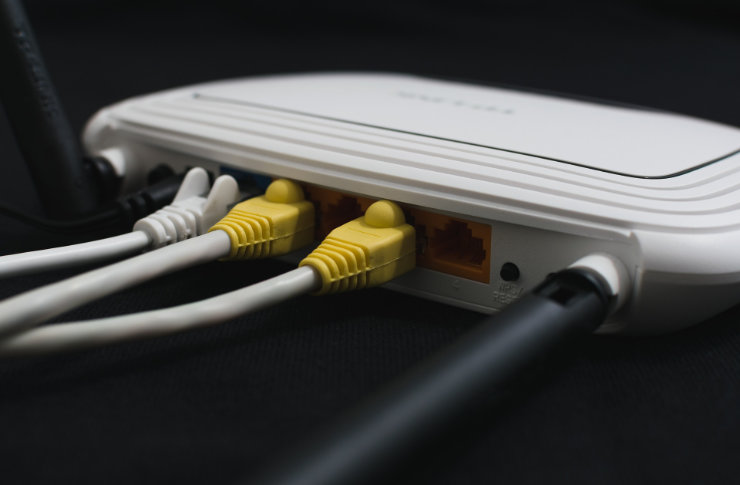The Best Internet in the World: Your Guide to Speed, Prices, and Providers for 2025
As we approach 2025, the landscape of internet connectivity is evolving rapidly. With advancements in technology and infrastructure, consumers worldwide are seeking faster, more reliable, and cost-effective internet solutions. This comprehensive guide will explore the best internet options available globally, focusing on speeds, pricing, and leading providers. Whether you're a casual browser or a heavy data user, understanding the current state of internet services is crucial for making informed decisions about your connectivity needs.

How to Find Internet Providers Available at Your Address
Finding the right internet provider for your location is the first step in securing top-notch connectivity. Start by using online tools that allow you to input your address and view available options. Many countries have national databases or comparison websites that list local providers. Additionally, contacting your neighbors or checking with your local government can provide insights into regional offerings. Remember that availability can vary significantly even within the same city, so it’s essential to check specifically for your exact address.
Understanding Internet Types: Fiber Optics vs. DSL vs. 4G/5G
The type of internet connection you choose significantly impacts your online experience. Fiber optic internet offers the fastest speeds and most reliable connection, with symmetrical upload and download rates. DSL (Digital Subscriber Line) utilizes existing phone lines and is widely available but generally slower than fiber. 4G and 5G mobile networks provide wireless internet access, with 5G offering speeds comparable to some fixed-line connections. Each technology has its strengths and limitations, so consider factors like availability, speed requirements, and mobility when making your choice.
What Internet Speed Do You Really Need?
Determining the right internet speed for your household depends on your online activities and the number of connected devices. For basic browsing and email, 25 Mbps might suffice. However, households with multiple users streaming 4K content, gaming online, or working from home may require 100 Mbps or more. Consider your peak usage times and factor in future needs as technology advances. It’s often better to opt for slightly higher speeds to ensure a smooth experience across all your devices and applications.
How Can You Reduce Your Monthly Internet Bill?
Saving money on your internet bill is possible with some strategic approaches. Start by comparing offers from multiple providers in your area. Look for promotional deals, but be aware of contract terms and price increases after introductory periods. Bundling services like internet, TV, and phone can sometimes lead to savings. Consider purchasing your own modem and router instead of renting from your provider. Regularly review your usage and adjust your plan accordingly – you might be paying for more speed than you need.
A Look at Major Internet Providers Around the World
As we look towards 2025, several global internet providers stand out for their coverage, speed, and innovative services. Here’s a comparison of some leading providers:
| Provider | Region | Key Features | Estimated Speed Range |
|---|---|---|---|
| Starlink | Global | Satellite-based, low latency | 50-250 Mbps |
| Google Fiber | USA | Ultra-fast fiber optic | 1-2 Gbps |
| NTT | Japan | Advanced fiber network | 1-10 Gbps |
| Deutsche Telekom | Europe | Extensive coverage | 50 Mbps - 1 Gbps |
| Reliance Jio | India | Affordable 4G/5G | 10-300 Mbps |
Prices, rates, or cost estimates mentioned in this article are based on the latest available information but may change over time. Independent research is advised before making financial decisions.
These providers represent a mix of traditional telecom companies and innovative newcomers, each offering unique advantages. Starlink’s global satellite network aims to provide high-speed internet to remote areas, while established players like NTT in Japan continue to push the boundaries of fiber optic speeds. Google Fiber, though limited in coverage, sets a high bar for urban connectivity in the United States. European providers like Deutsche Telekom focus on widespread coverage and consistent speeds, while companies like Reliance Jio in India prioritize affordability and mobile connectivity.
As we move closer to 2025, the internet landscape continues to evolve. The rollout of 5G networks, advancements in fiber optic technology, and the emergence of new satellite-based services are reshaping global connectivity. Consumers can expect faster speeds, lower latency, and more reliable connections across various technologies. The best internet in the world will ultimately depend on individual needs, location, and budget. By staying informed about the latest developments and understanding your own requirements, you can make the most of the exciting advancements in internet technology on the horizon.




